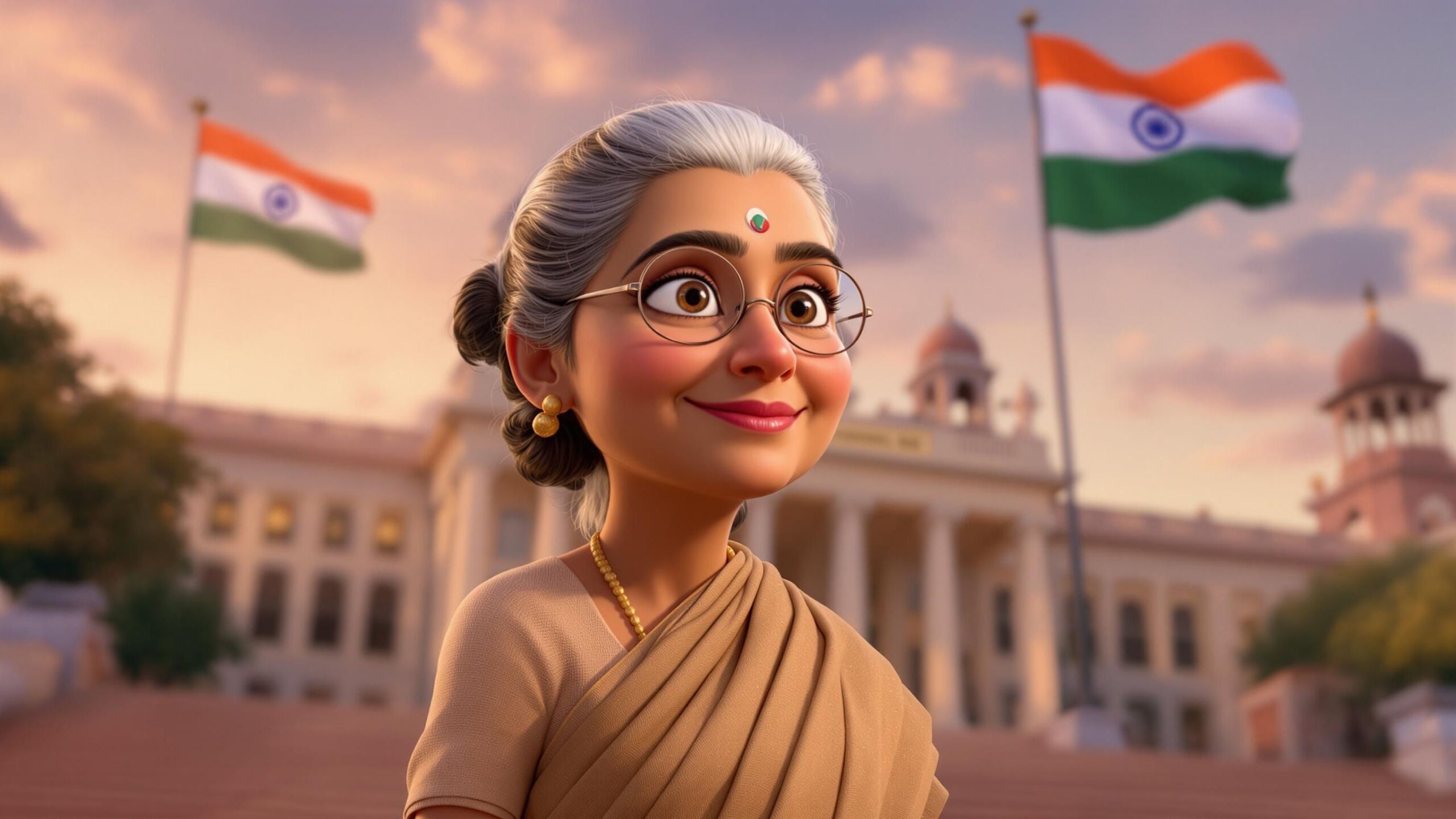Indira Gandhi was no stranger to the corridors of power—she was born into them. But when she stepped into the highest office of the world’s largest democracy, she didn’t just inherit a legacy—she carved her own. As India’s first female Prime Minister, Indira Gandhi broke through one of the toughest glass ceilings in global politics with a quiet fury and commanding presence. Her reign was bold, controversial, and transformative, marked by war, emergency rule, sweeping reforms, and unflinching resolve. Loved and loathed in equal measure, Indira wasn’t just a leader—she was a force of nature who redefined what leadership looked like in post-colonial India. From her daring decisions on the battlefield to her iron grip on domestic policy, she earned a reputation as “the only man in her cabinet,” though history remembers her as something far greater—a woman who ruled with a complex blend of grace and grit. This is the story of the political titan who reshaped India’s destiny and left behind a legacy that still sparks debate, pride, and introspection.
Born Into Politics, Raised by a Nation
Indira Priyadarshini Gandhi was born on November 19, 1917, into India’s most famous political dynasty—the Nehru family. Her father, Jawaharlal Nehru, was a towering figure in India’s independence movement and the first Prime Minister of India. From an early age, Indira was immersed in nationalist ideals, attending rallies, helping coordinate small acts of resistance, and watching history unfold from her own living room. Politics, for her, wasn’t an ambition. It was inheritance. It was identity. Her education took her across the globe—first to Shantiniketan in India, then to Oxford University in England. She was smart, reserved, and deeply curious about the world. Unlike her father’s magnetic oratory style, Indira’s strength was introspection. But don’t mistake quiet for weakness—she had a spine of steel wrapped in silk. During the 1942 Quit India Movement, she and her husband, Feroze Gandhi, were arrested for their activism. Her marriage was controversial, her ideals bold, and her future destined for power. By the 1950s, Indira was slowly stepping out of her father’s shadow. She became the President of the Indian National Congress and a close advisor to Nehru. After his death in 1964, India was at a crossroads, and so was Indira. She soon found herself catapulted into national leadership in a way no one expected—first as a Cabinet Minister and then, astonishingly, as Prime Minister in 1966.
The Reluctant Leader Who Took Charge
When Indira Gandhi first became Prime Minister, her critics called her “goongi gudiya”—the dumb doll. Many believed she was a puppet for senior Congress leaders who underestimated her political instincts. But Indira would soon show that beneath her calm demeanor was a strategic mastermind. The dumb doll would speak—and roar. Her first term wasn’t easy. India was reeling from economic instability, food shortages, and inflation. But Indira responded with sweeping reforms. She nationalized major banks, tightened control over the economy, and poured resources into the Green Revolution—an agricultural initiative that turned India from a food-deficient country to a self-sufficient one. Fields of wheat in Punjab and Haryana became her silent allies. Farmers became fans. Her moves were bold, populist, and deeply effective. Indira understood the pulse of the people. She was a master of symbolism—wearing handloom saris, speaking in Hindi, and visiting rural areas barefoot. She built an image of a mother to the nation, even as she consolidated power behind closed doors. And the more people underestimated her, the more fiercely she led.
A Woman at War: Triumph in Bangladesh
Indira Gandhi’s defining moment on the world stage came in 1971 during the Indo-Pakistani War. As millions of refugees fled East Pakistan (now Bangladesh) into India due to a brutal crackdown by the Pakistani military, Indira’s government faced a massive humanitarian crisis. Diplomacy didn’t work. Waiting wasn’t an option. So she acted. With strategic planning and military strength, India intervened and swiftly defeated Pakistan in a war that lasted just 13 days. The result? The creation of Bangladesh. It was a political and military masterstroke, one that won her international acclaim and domestic admiration. Time magazine featured her on the cover and dubbed her “The Empress of India.” The victory also exposed her diplomatic finesse. She had secured a treaty of friendship with the Soviet Union before the war, ensuring no external interference. She emerged not just as a Prime Minister, but as a global leader who could stand toe-to-toe with world powers and still walk away with her head high and her nation prouder than ever.
The Emergency: Power and Paranoia
But with great power comes greater scrutiny—and in 1975, Indira Gandhi’s legacy took a dark turn. After being found guilty of electoral malpractice by the Allahabad High Court, rather than step down, she declared a state of Emergency. Citing threats to national security, civil unrest, and political instability, she suspended elections, censored the press, and imprisoned opposition leaders. For 21 months, democracy in India was put on hold. The Emergency remains the most controversial chapter in her career. While some infrastructure and productivity improvements occurred, they were overshadowed by mass sterilization drives, human rights violations, and authoritarian rule. It was a period marked by fear and silence. Indira’s iron grip on power became both her strength and her downfall. When elections resumed in 1977, she faced a backlash so strong that she lost not only the Prime Ministership but her own seat in Parliament. Many thought her political career was over. But Indira Gandhi wasn’t done—not by a long shot.
The Comeback Queen
In politics, very few get second chances. Even fewer make it count. But Indira Gandhi’s 1980 return to power was a political resurrection. Despite the scars of Emergency, the Indian public, disillusioned by the fractured opposition, brought her back. She had rebuilt her party, her image, and her message. Her second innings was more tempered but still marked by bold decisions. She focused on science, technology, and rural development. But it was also a time of growing unrest—particularly in Punjab, where separatist tensions were boiling. In 1984, these tensions erupted into one of the most controversial decisions of her career—Operation Blue Star. To flush out Sikh militants holed up in the Golden Temple, she ordered a military operation. Though the mission achieved its goal, it came at a tremendous cost. The temple, the holiest site for Sikhs, was damaged. Civilian casualties mounted. Outrage spread. And the fallout would prove deadly.
A Life Cut Short, A Legacy Set in Stone
On October 31, 1984, just months after Operation Blue Star, Indira Gandhi was assassinated by two of her Sikh bodyguards in the gardens of her residence. Her assassination shocked the nation and triggered horrific anti-Sikh riots across India. It was a tragic end to a complex, commanding life. Yet her death didn’t silence her impact. Streets, scholarships, airports, and awards were named in her honor. Portraits of her—with her distinctive streak of white hair and intense gaze—still hang in public offices. The Indira Gandhi that history remembers is as much a mythic figure as she is a political one.
A Complicated Icon: Feminist and Fighter
To many, Indira Gandhi was a paradox. She was India’s first female leader but never called herself a feminist. She made space for women in power, yet surrounded herself mostly with male advisors. She broke barriers, yet enforced Emergency. She embraced the poor, yet tolerated corruption. And yet, the fact remains—she changed what leadership looked like in India forever. She proved that a woman could rule a massive, diverse, and deeply patriarchal nation with authority, vision, and boldness. She stood on her own, even in the shadows of Nehru, and created a legacy entirely her own. She became a role model not just in India but globally. Leaders from around the world looked to her with awe and caution. Her story was not one of perfection, but of power wielded with consequence.
The Bhindranwale Shadow and the Lingering Debate
Even decades after her death, Indira Gandhi remains one of the most discussed figures in Indian politics. The wounds from Operation Blue Star have not completely healed. Debates rage over whether it was necessary, mishandled, or avoidable. Her political decisions sparked movements, rebellions, and eventually her own downfall. And yet, the infrastructure she built, the agricultural systems she strengthened, and the leadership standards she set continue to shape Indian policy and discourse. Her fingerprints are on every major pillar of modern Indian governance—both the celebrated and the contested ones.
The Indira Influence: Lasting Lessons
Indira Gandhi’s legacy is carried not just in books and statues, but in the very pulse of Indian democracy. Every female politician who rises in India does so on a path she helped clear. Every leader who is tempted to overreach their power walks in the shadow of the Emergency. Every time India is challenged at the global stage, her strength is silently invoked. She taught a generation that leadership requires more than charisma—it needs courage. That democracy, while resilient, must be safeguarded, not taken for granted. And perhaps most of all, that power must be wielded with accountability, because history watches.
The Iron Lady of India
Indira Gandhi remains one of the most unforgettable figures in the history of India and the global political stage. She ruled during a time of incredible upheaval and left behind a legacy as rich and complicated as the country she led. Her ability to command a nation with strength, vision, and sometimes ruthless determination earned her admiration and criticism in equal measure. In life, she was often seen as a thunderstorm—capable of both nourishing and destroying. In death, she became a symbol—a reminder that greatness comes with a price, and leadership is not for the faint of heart. She was the woman who dared to lead a billion hearts. And in doing so, she forever changed the rhythm of Indian politics.




